
Gluten Free Shortcrust Pastry Recipe

Gluten-Free Shortcrust Pastry is a basic preparation designed for celiacs or for those who follow a gluten-free diet. A variation of the classic shortcrust pastry, it is made with rice flour, corn starch, potato starch, baking powder, an egg, sugar and seed oil: with a light and crumbly consistency, it is butter- and milk-free, therefore also suitable for those who are lactose intolerant.
What is Gluten Free Shortcrust Pastry?
Gluten-free shortcrust pastry has evolved from the growing need to accommodate individuals with celiac disease or gluten intolerance. Traditionally, shortcrust pastry has been a staple in various European cuisines, often used in tarts, pies, and quiches. The challenge of creating a gluten-free version lies in replicating the delicate, crumbly texture without using wheat flour, which contains gluten—a protein that provides elasticity and structure. Over time, bakers and chefs have experimented with alternative flours like rice, cornstarch, and potato starch. These ingredients help achieve a similar consistency, making the dough versatile and easy to work with. The development of gluten-free shortcrust pastry has opened up new possibilities in baking, allowing for delicious, inclusive treats that cater to a wider audience while preserving the essence of traditional pastry.
Tips for the Best Gluten Free Shortcrust Pastry
- Weighing the ingredients, especially the flours, ensures the correct ratios, as gluten-free baking can be sensitive to variations.
- Sifting the rice flour, cornstarch, potato starch, and baking powder together helps to evenly distribute the baking powder and prevent clumps, leading to a smoother dough.
- Use cold eggs and chilled vegetable oil to prevent the dough from becoming too warm, which can make it sticky and difficult to handle. You can even chill the dough slightly if it becomes too soft while working with it.
- Allow the dough to rest in the refrigerator for at least 30 minutes before rolling it out. This step helps the starches hydrate and makes the dough more manageable.
- Handle the dough as little as possible to avoid overworking it, which can lead to a tougher texture. Lightly flour your work surface and rolling pin with rice flour to prevent sticking.
- Roll out the dough to an even thickness to ensure uniform baking. Aim for a thickness of about 1/4 inch (6 mm) for cookies or tarts.
- Since gluten-free dough can brown quickly, keep an eye on the baking time. The baskets should be lightly golden when done, which may vary slightly depending on your oven.
What Other Flour Can I Use for My Gluten Free Shortcrust Pastry?
Other flours that can be used for gluten-free shortcrust pastry include almond flour, coconut flour, oat flour, buckwheat flour, sorghum flour, and millet flour. These flours can be used alone or blended with starches like tapioca starch or arrowroot powder to achieve the desired texture and flavor.
Can I Use Butter Instead of Oil?
Yes, you can! Butter will add a rich flavor and a slightly different texture, making the pastry more crumbly and tender. To substitute, use the same weight of butter as the oil called for in the recipe, ensuring it's cold and cut into small pieces before incorporating it into the dry ingredients.
Why is My Pastry So Crumbly and Falls Apart?
The dough may be crumbly and falling apart because it lacks enough moisture or fat to bind the ingredients together. This can happen if the flour-to-fat ratio is off, the dough is overmixed, or if it hasn't rested long enough. To fix this, you can add a small amount of cold water or additional oil/butter gradually until the dough comes together. Additionally, allowing the dough to rest in the refrigerator can help hydrate the flours and improve its texture.
Can I Use a Food Processor to Make This Pastry?
Yes, of course. Using a food processor can help quickly and evenly incorporate the ingredients, especially the fats and flours. Simply pulse the dry ingredients together, add the cold butter or oil, and then pulse until the mixture resembles coarse crumbs. Finally, add the wet ingredients and pulse until the dough just comes together, being careful not to over-process.
Why Did My Pastry Turn so Hard?
The dough may have turned hard if it was overmixed, if too much flour was added, or if it was not enough fat or liquid in the mixture. Overworking the dough can develop too much structure, even in gluten-free recipes, making it tough. Additionally, using too little fat or liquid can prevent the dough from being tender and pliable. To prevent this, handle the dough gently, measure ingredients accurately, and consider adding a bit more fat or liquid if the dough seems too dry.
Can I Skip the Xanthan Gum for This Recipe?
Xanthan gum can be skipped in this recipe because the combination of rice flour, cornstarch, and potato starch already provides enough structure and elasticity. Additionally, the egg in the recipe helps bind the ingredients together, reducing the need for xanthan gum, which is typically used to mimic the binding properties of gluten.
What Can I Use This Shortcrust Pastry For?
Gluten-free shortcrust pastry can be used for a variety of dishes, including tarts, pies, quiches, cookies, and tartlets. It serves as a versatile base for both sweet and savory fillings, such as fruit fillings, custards, chocolate ganache, or savory mixtures like cheese and vegetables.
Can I Freeze Gluten Free Shortcrust Pastry?
Absolutely! You can freeze the dough as a whole ball, flattened disc, or rolled-out sheet. Wrap it tightly in plastic wrap and place it in an airtight container or freezer bag. It can be stored for up to 2-3 months. Thaw it in the refrigerator before using.
How to Store Gluten Free Shortcrust Pastry
Gluten-Free Shortcrust Pastry, when raw, can be stored in the refrigerator, wrapped in cling film, for up to 4 days; when cooked and unfilled, you can keep it at room temperature, tightly closed in an airtight container, for up to 1 week.
Ingredients
How to Make Gluten Free Shortcrust Pastry
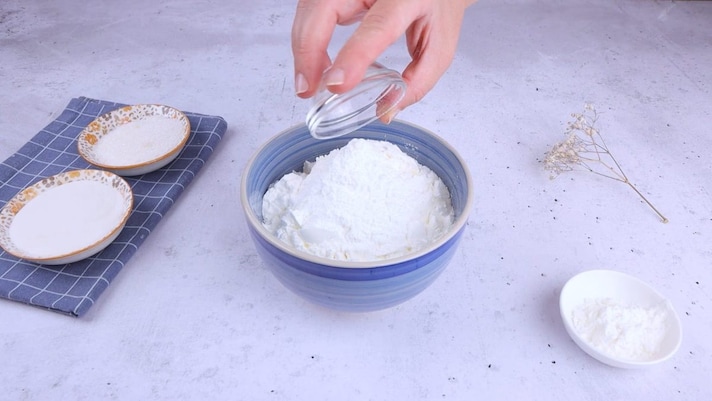
Collect the rice flour, cornstarch, potato starch and yeast in a bowl, then mix them with a whisk to uniform them and set them aside.
Collect the rice flour, cornstarch, potato starch and yeast in a bowl, then mix them with a whisk to uniform them and set them aside.
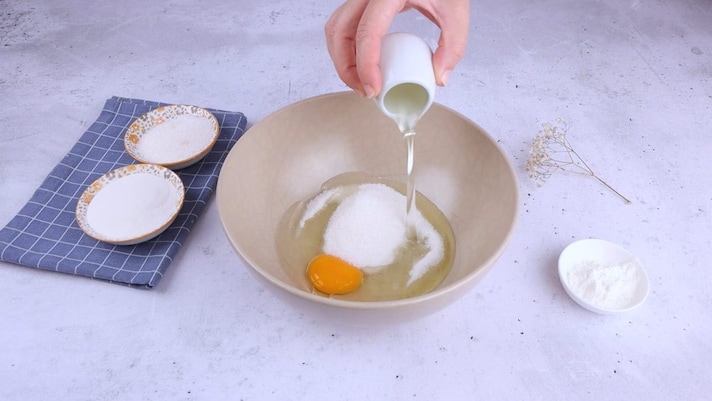
In a second larger bowl, combine the egg with the sugar and the seed oil, then mix them with a whisk until you obtain a smooth and homogeneous mixture.
In a second larger bowl, combine the egg with the sugar and the seed oil, then mix them with a whisk until you obtain a smooth and homogeneous mixture.
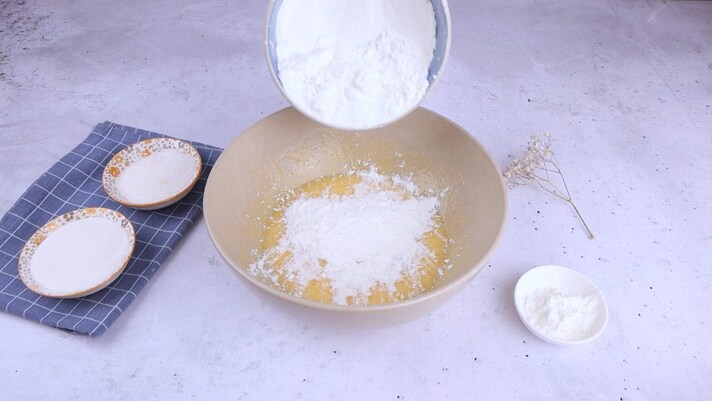
At this point, add the powders a little at a time, starting to work the ingredients with a fork, so that the flour can gradually absorb the liquid part.
At this point, add the powders a little at a time, starting to work the ingredients with a fork, so that the flour can gradually absorb the liquid part.
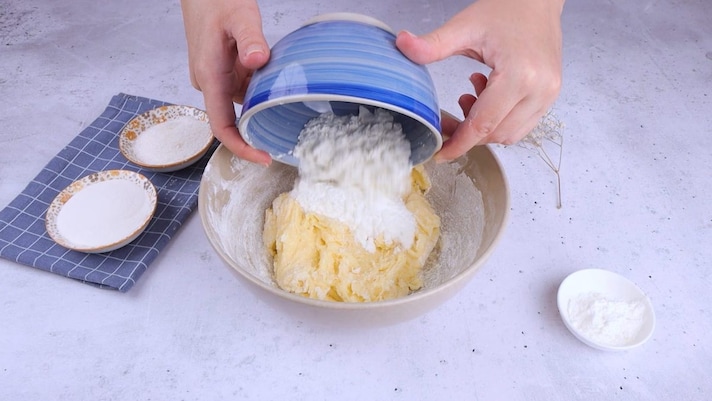
When the mixture is sufficiently workable, complete with the rest of the powders.
When the mixture is sufficiently workable, complete with the rest of the powders.
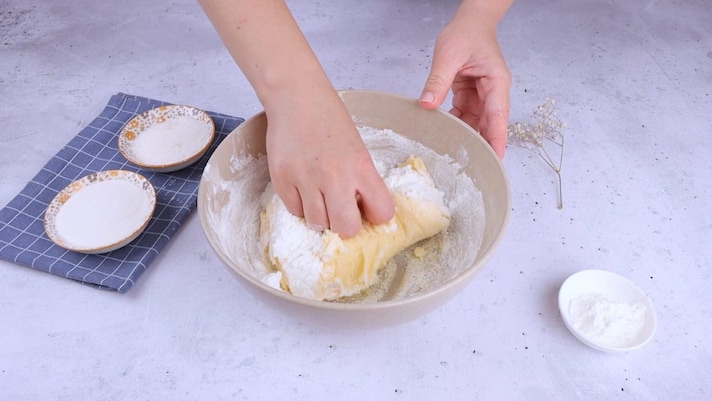
Knead only at the end with your hands, until a loaf has formed.
Knead only at the end with your hands, until a loaf has formed.
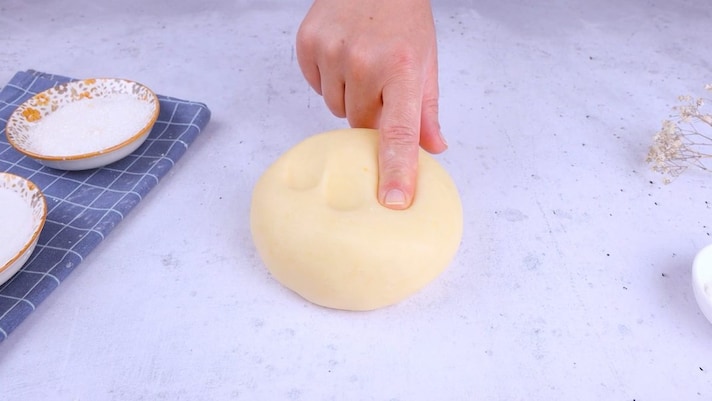
The dough should be soft but compact: at this point, you can immediately use it to create tarts, biscuits and any other preparation you like.
The dough should be soft but compact: at this point, you can immediately use it to create tarts, biscuits and any other preparation you like.
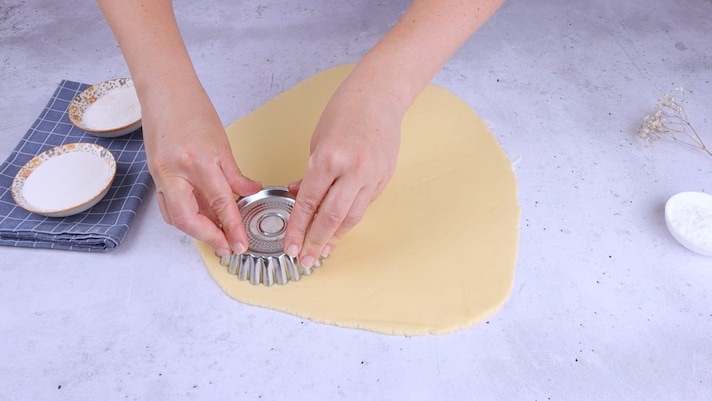
To make the tartlets, roll out the shortcrust pastry into a thin layer on a lightly floured pastry board with the help of a rolling pin, then cut out as many shapes as you like with a special cutter.
To make the tartlets, roll out the shortcrust pastry into a thin layer on a lightly floured pastry board with the help of a rolling pin, then cut out as many shapes as you like with a special cutter.
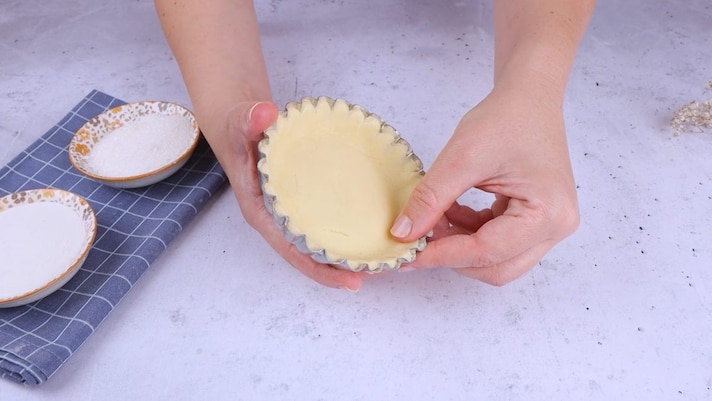
Grease the molds with a drop of oil and sprinkle with flour, then transfer the pastry inside and make sure it adheres well, pressing it with your fingers.
Grease the molds with a drop of oil and sprinkle with flour, then transfer the pastry inside and make sure it adheres well, pressing it with your fingers.
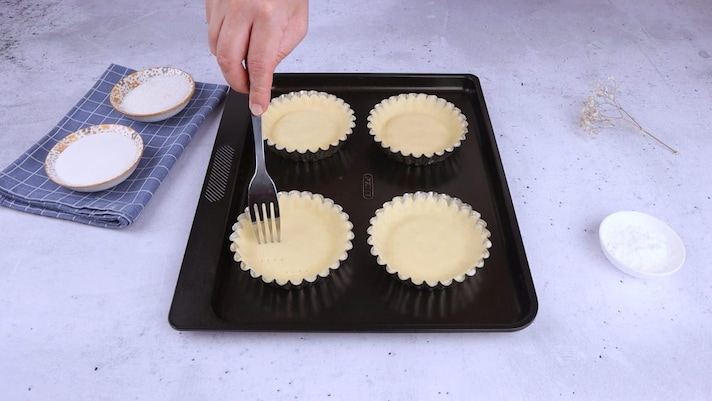
Place the tartlets in a large baking pan and prick the bottom of the pastry with the prongs of a fork, so that it does not swell excessively during cooking.
Place the tartlets in a large baking pan and prick the bottom of the pastry with the prongs of a fork, so that it does not swell excessively during cooking.
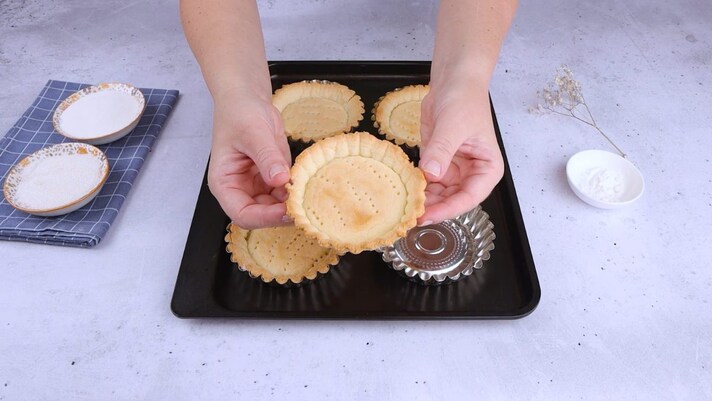
Bake the tartlets at 360°F (180°C) for 20 minutes and remove them from the oven when they are golden brown. Let them cool before removing them from the moulds.
Bake the tartlets at 360°F (180°C) for 20 minutes and remove them from the oven when they are golden brown. Let them cool before removing them from the moulds.
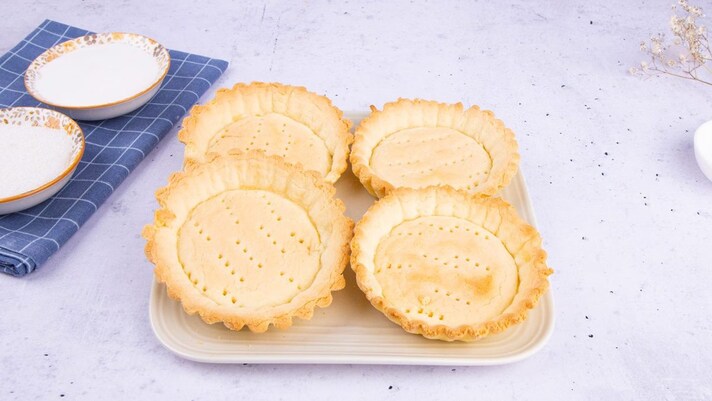
The gluten-free shortcrust pastry tartlets are ready to be filled as you like.
The gluten-free shortcrust pastry tartlets are ready to be filled as you like.
;Resize,width=767;)

;Resize,width=712;)
;Resize,width=712;)
